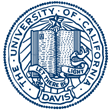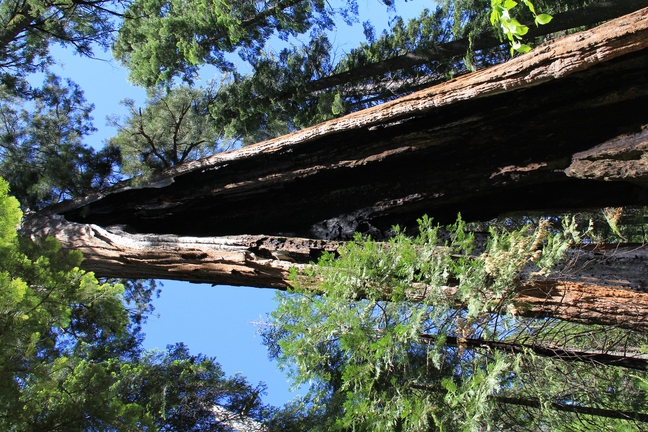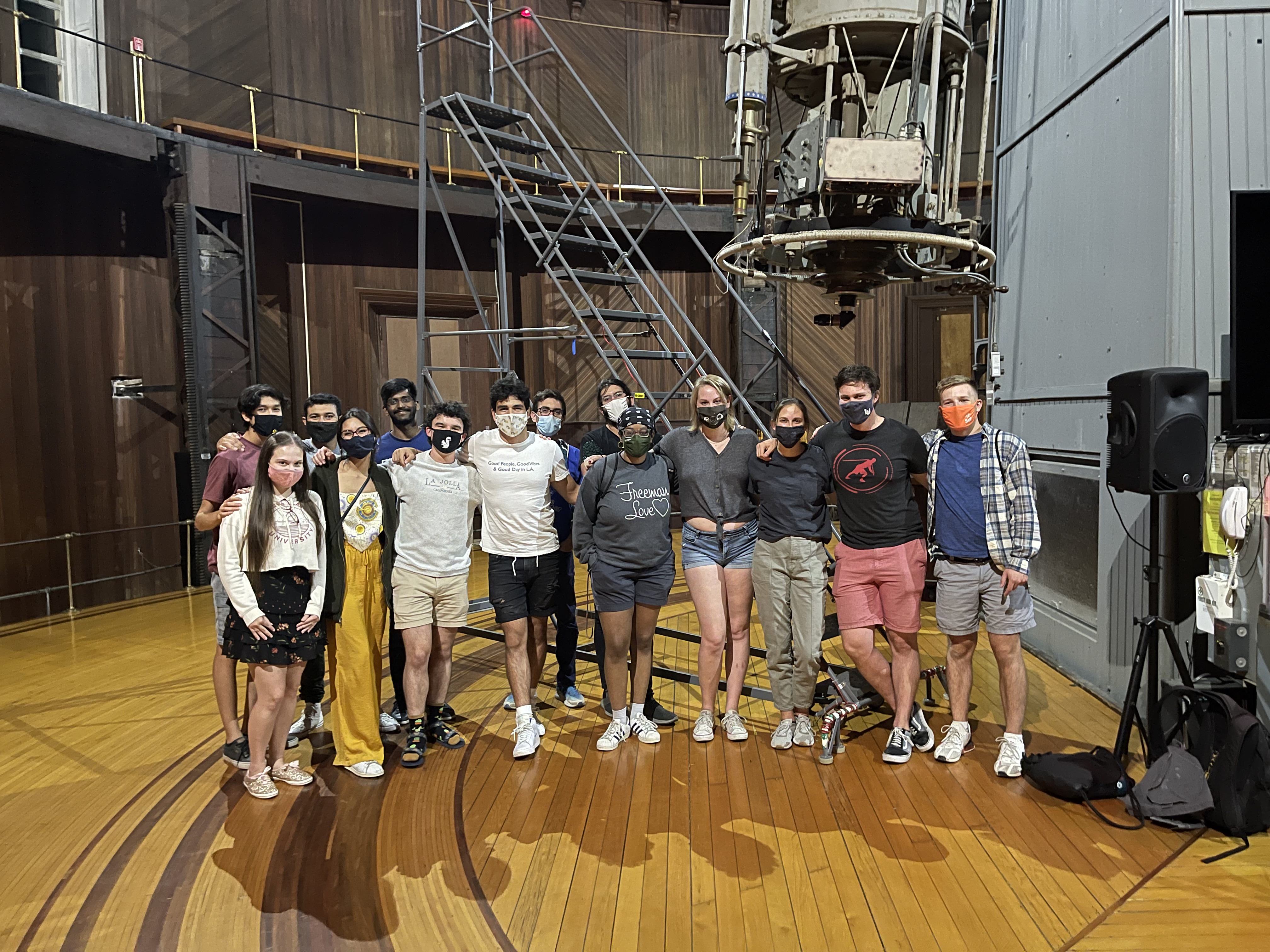
This REU program was funded through NSF PHY-1852581.
Barbecue
Normally we schedule a field trip on the first full weekend of the REU program. However, the university's COVID rules at the start of this summer required 6 feet of separation inside vehicles, which basically made driving anywhere impossible. Instead, on the program's first Saturday we had a barbecue outside the students' apartments. Fortunately, the university then updated its travel rules, and we were able to proceed with several of our usual trips. (Others, such as Livermore National Laboratory, remained closed to in-person tours.)
Crocker Laboratory
Crocker Laboratory, on the UC Davis campus just west of the Physics Building, has a cyclotron with a variety of uses. Its Director, Physics Professor Eric Prebys, showed the REU students around the facility and described some of its current and future projects. For several decades the cyclotron has provided proton therapy for eye cancers. Its energy range also makes it useful for testing how radiation affects electronics destined for space, where there is no atmospheric protection from cosmic rays. Other plans stem from the surprising fact that interaction cross-sections for many isotopes have never been accurately measured. The beam energy can be tuned more easily on the the Crocker cyclotron than on many others, making it ideal for such work.
Lassen Volcanic National Park
Given the dry weather in recent years, we scheduled Lassen Volcanic National Park as our first trip beyond Davis in hope of avoiding forest fires. This proved even more prescient than we had expected. The Dixie Fire, which reached more than half of Lassen and became the largest fire in California history, started the day after we left. The fire burned for more than 3 months, with Lassen closed for nearly the entire time.
Lassen has a number of active and recently-active volcanic features. We climbed the Cinder Cone volcano (formed from an eruption about 400 years ago -- quite recent on any geological time scale!), walked through the Subway Cave lava tube (formed about 20,000 years ago), and viewed the otherworldly Bumpass Hell hydrothermal area with its boiling mud pots, fumaroles, and strangely colored superheated pools. We also strolled around Manzanita Lake with its spectacular views of Lassen Peak, an active volcano that last erupted in 1915, and swam in Butte Lake, which is sadly shrunken from the past few years of drought.


Left: the path down into the Cinder Cone crater, viewed from the top of the cone. Right: alpine scenery.
Calaveras Big Trees State Park
For our next trip we drove east to the foothills of the Sierra Mountains. Calaveras Big Trees State Park does indeed have big trees. Sequoias like those found here can live up to 3000 years and are the most massive living objects. Their cousins the coastal redwoods grow taller, to 370 feet. The tallest sequoias are "only" about 310 feet, but with their thick trunks, which can reach over 30 feet in diameter, they have more total volume. We walked through a grove of giant trees, and sometimes through individual trees, and also had a picnic lunch in the park.
It's always hard for photos to convey the size of these trees. The left image below shows part of a downed tree; compare its girth to that of the standing "normal" trees. The right image shows a fire-damaged but living tree. Sequoias and coastal redwoods can survive even when (as here) the trunk is completely burned through.


McClellan Nuclear Research Center
Neutrons have a larger differential response to water than x-rays do. (They scatter a LOT in water.) This means they can see things like root structures of plants through dry earth, and they may be useful for learning how plants absorb water. We also saw x-ray and neutron images of a thousand-year-old Buddhist statue. The neutrons -- but not the x-rays -- showed that the statue had flowers, possibly lotus, in its base as well as a long sword running upwards with its point in the middle of the figure's head. The nuclear reactor may be useful for future art investigations as well! We also learned that McClellan has recently been running near full capacity, with all four bays in use. The work inclues a lot of aerospace testing for things like trips to Mars or the moon. These trips require that individual parts work at the 1 in a billion level. But that's not practical as far as assembly goes; some errors inevitably get made. The solution is non-destructive testing after parts are made, and the McClellan neutron facilities are excellent for that. In addition to the scientific tour, we had a pizza lunch.
Lick Observatory
Lick Observatory, operated through the University of California, sits atop a small (4265 feet) mountain about 15 miles from the south edge of the San Francisco Bay. We had a private tour of the complex, which has about 10 telescopes. Although no longer the largest in the world, some are still used for research. They can perform surveys, for example regularly scanning a portion of the sky to search for new supernovas or other events that are most interesting to observe within a short time window. When the surveys find something, they alert facilities with larger telescopes. The large Lick reflecting telescope, with a 3-meter mirror, can also be used for observations that require several weeks of telescope time -- something that is not possible on the largest, most in-demand facilities.

Students in front of the bottom of the large refractor, a viewing ladder, and (at right) the telescope's support structure.
The tour also discussed past research at Lick and the history of the observatory. It ended with the large refracting telescope, pictured above. This was once the largest telescope in the world and still the third-largest refractor. (This is mostly because of the shift to reflecting telescopes, which can have much larger mirrors without scaling up the size of the entire telescope and dome.) Normally we can view a few objects through the large refractor, but this year the fires throughout the state obscured the sky too much. The consolation was that we got back to Davis earlier than usual, although still well past midnight. Fortunately the rest of the tour makes the trip well worth it even when the viewing portion fails.